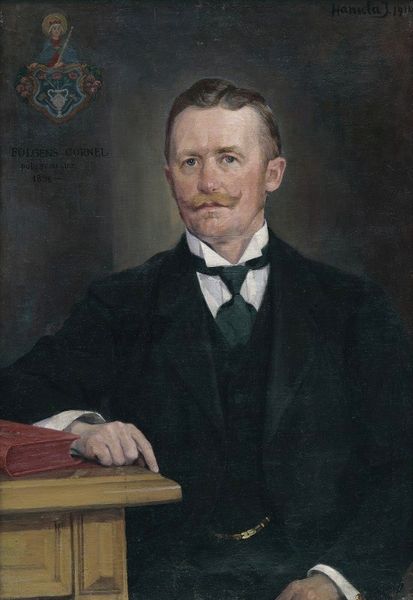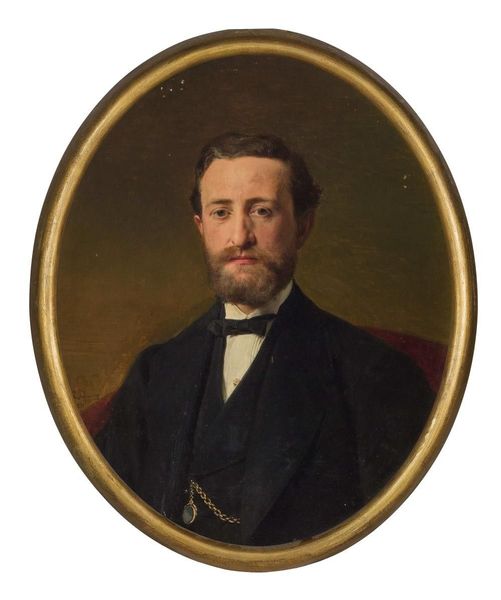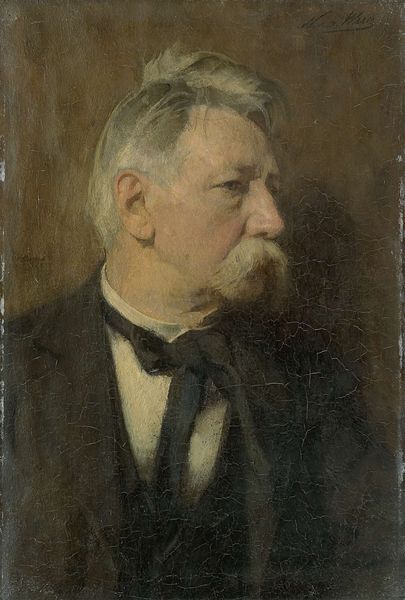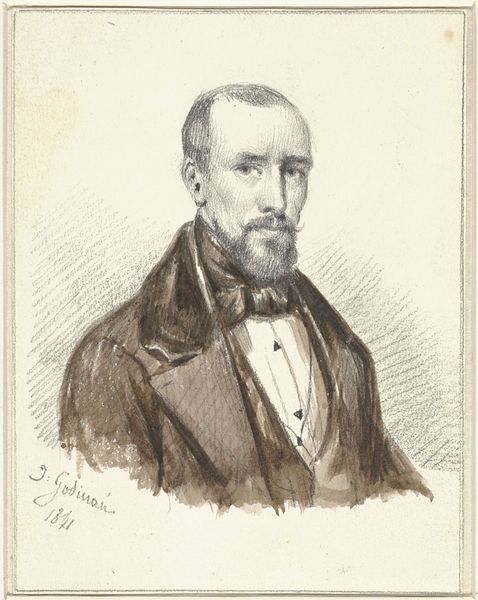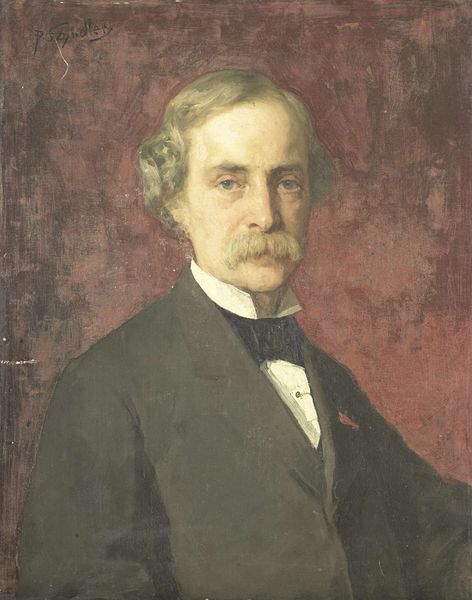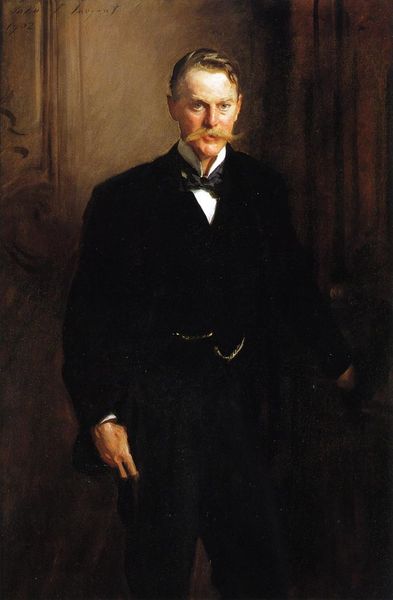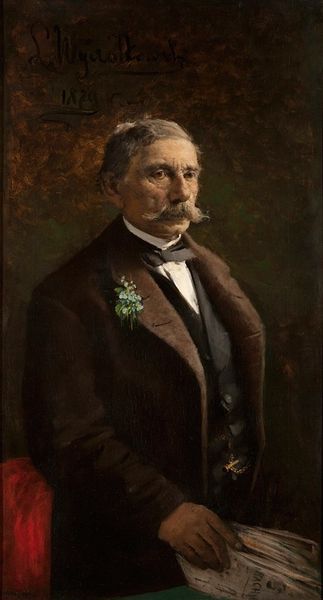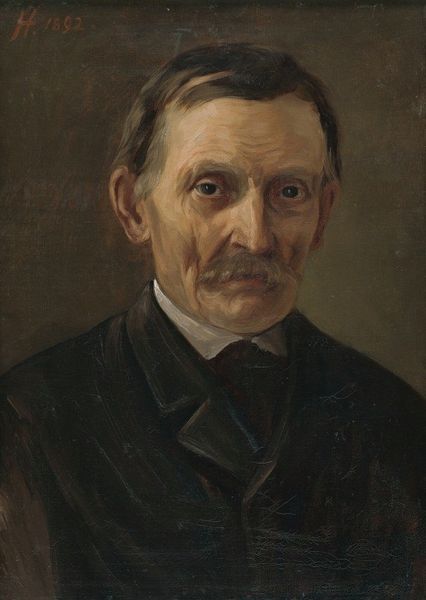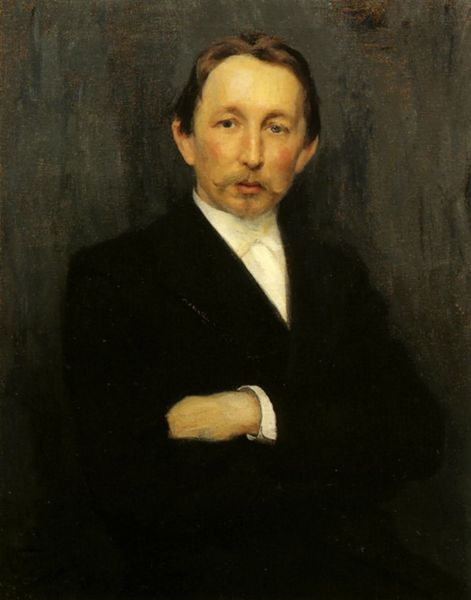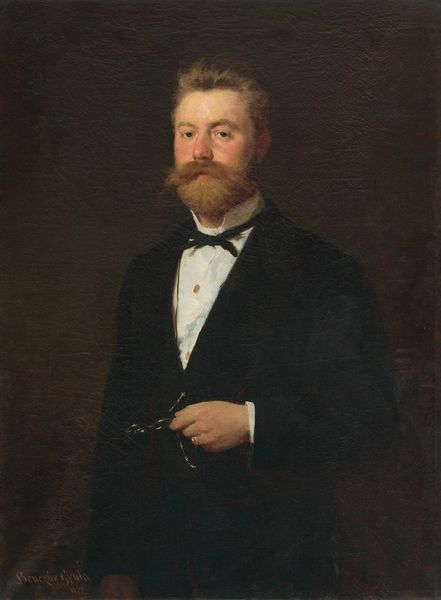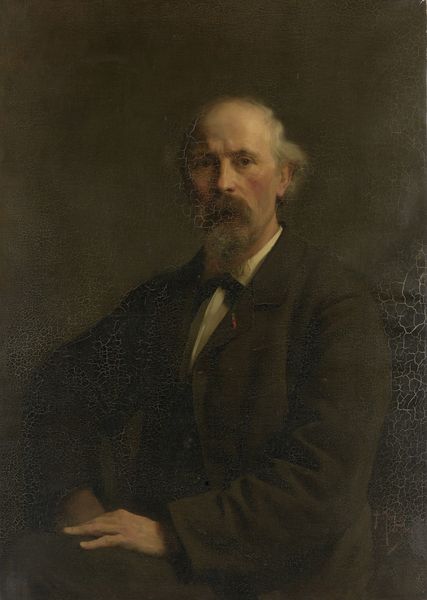
painting, oil-paint, impasto
#
portrait
#
painting
#
oil-paint
#
impasto
#
intimism
#
academic-art
#
modernism
#
realism
Dimensions: height 56 cm, width 46 cm
Copyright: Rijks Museum: Open Domain
Curator: We're looking at Thérèse Schwartze's portrait of Paul Joseph Constantin Gabriël from 1899, currently housed in the Rijksmuseum. It is a striking piece. Editor: It has a really wonderful melancholic quality, almost mournful in its subdued tones, wouldn't you say? The impasto is handled rather deftly too, there is an unusual lightness in the brushwork. Curator: Absolutely, the mood is captivating. What I find particularly compelling is how the piece operates within the social framework of its time. Schwartze, as a prominent woman artist, painted Gabriël, who himself championed the Hague School, a movement rooted in portraying the everyday lives of ordinary people. The materiality also speaks to the artist's socio economic stance, allowing her to experiment with innovative materials, as the surface and its texture take a leading role in the construction of this person's portrayal. Editor: Precisely! This interplay suggests an intriguing dialogue about class, labour, and the representation of artists themselves. How did their individual roles in the art world influence the production and reception of this specific portrait? We are presented with an affluent portrayal but is the means of production visible? I note a level of artistic control and that intrigues me further. The materiality hints at the accessibility of resources during that period, and how artists negotiated their craft in response to such privilege. Curator: That's an insightful perspective. Consider also how this portrait, made by a woman artist during a period of growing feminist consciousness, reclaims agency in representing a male figure. Schwartze, breaking away from the patriarchal structure within the traditional art historical canon, shapes Gabriel in a way that potentially reflects on or critiques societal norms regarding artistic expression, labour, and the roles allowed within the arts, more generally. It opens up space for dialogue regarding power structures. Editor: A wonderful point! Seeing it as a form of quiet subversion transforms my understanding of its creation and context completely. It certainly invites us to delve deeper into the social dynamics behind its production, encouraging dialogue regarding labour and societal critique during this moment. Curator: Ultimately, examining it as more than just a mere portrait gives us invaluable perspectives into not only the relationship between Schwartze and Gabriel but regarding the societal structures regarding power dynamics and expression. Editor: Indeed, thinking about its materiality as a deliberate artistic choice certainly opens doors to deeper sociohistorical investigations of production and artistry in its own time.
Comments
No comments
Be the first to comment and join the conversation on the ultimate creative platform.
